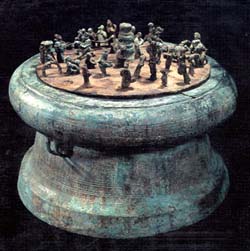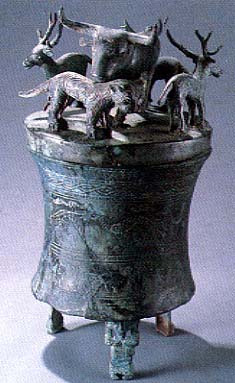

|
Yunnan used to be an independent kingdom which was occupied by a large number of non-Chinese aboriginal peoples who lacked any strong political organization during the Qin and Han Dynasties (201BC-263AD).
During the Tang Dynasty (618-906), the local minority Bai established a powerful kingdom, Nanzhao, south of Dali. Initially allying its power with the Chinese against the Tibetans, this kingdom extended its power until, in the middle of the 8th century, it was able to challenge and defeat the Emperor's armies, Tang troops. It took control of a large slice of the south-west and established itself as a fully independent entity, dominating the trade routes from China to India and Burna.
The Nanzhao kingdom fell in the Song Dynasty (960-1279)and was replaced by the kingdom of Dali (the name Dali has been used until today for the Bai Autonormas Prefecture).
During the Yuan Dynasty (1280-1368), Khubla Khan conquered the area. This part of the south-west was finally integrated into the empire as the province of Yunnan.
During the Second World War Yunnan was the strong point of defense against the Japanese invaders. The "Burma Road" ended in Yunnan and the "Flying Tigers" earned their reputation flying military supplies and equipment into this province. After World War II Yunnan was largely spared the fierce fighting between the Communists and Nationalist/Imperialists with only a few small skirmishes taking place on Yunnan soil.
The top picture is a bronze casting found in the province. It was made during the Han Dynasty. The lower picture is another bronze found in Yunnan and reported to be made in the Tang Dynasty.
Return to: Yunnan Main Page
|

